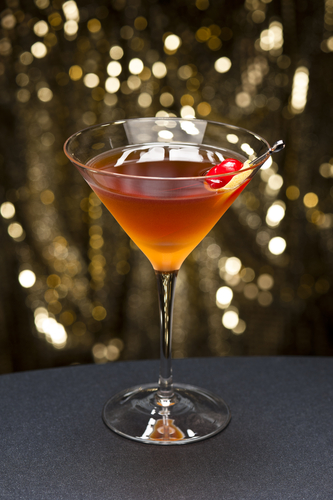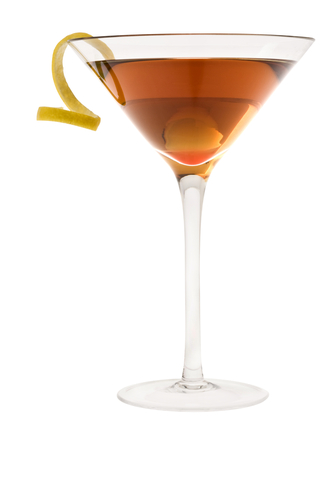Drink of the Week: The Brain-Duster
 Sometimes you just go with a drink to match your mood, and Brain-Dusted is about how I feel this week as my man-flu of last week slowly drifts away. It’s also a great way for me to get rid of the cheap brand of absinthe I picked up a while back, only to find I preferred using Herbsaint in my sazeracs after all.
Sometimes you just go with a drink to match your mood, and Brain-Dusted is about how I feel this week as my man-flu of last week slowly drifts away. It’s also a great way for me to get rid of the cheap brand of absinthe I picked up a while back, only to find I preferred using Herbsaint in my sazeracs after all.
Aside from the recipe posted by cocktail historian Dave Wondrich, some versions uses pastis or Pernod, which like absinthe are very heavy on the licorice-tasting herb, anise, but which I don’t have in my already well stocked liquor cabinet. One iteration actually increased the proportion of absinthe. If you’ve ever tried it, you know that a little goes a long way, even if you want your brain thoroughly dusted. Another recipe I found a mention of added simple syrup, and I just don’t think adding any additional sugar was needed given the high proportion of sweet vermouth and the relatively sweet and mellow nature of my cheap absinthe. (The brand I used is merely 92 proof; most absinthes are well over 110 and some go as high as 140.)
I stuck with something fairly close to the Wondrich take. Even so, my version of the drink is a bit different than Wondrich’s, but I’ll discuss that after the recipe.
The Brain-Duster
1 ounce whiskey (Canadian or rye, very preferably 100 proof)
1 ounce absinthe
1 ounce sweet vermouth
1 dash aromatic bitters
1 maraschino cherry (optional garnish)
Combine ingredients in a metal cocktail shaker. (If you use a plastic shaker, it’ll take a million washings to get rid of anise/licorice smell of the absinthe.) If you use cracked or crushed ice, stir for a good long time. If you use regular ice, shake for a good long time. Strain into a martini glass with a maraschino cherry for a bit of extra sweetness.
If you really want to get into the brain-dusted vein, you might consider accompanying your beverage with some Syd Barrett era Pink Floyd. Now that’s brain-dusted.
****
Mr. Wondrich suggested a 100 proof rye and the Rittenhouse Rye I had on hand should have fitted the bill perfectly. It was nice but still overpowered by the anise flavor of absinthe. (I’m not a big licorice lover, so take that into account.)
The next night, however, I tried with my new friend and a close relative of a heavy duty rye, 100 proof Canadian Club (last discussed here), I was suddenly quite found of the Brain-Duster. I also tried it with regular Canadian Club, and it wasn’t half bad, but 80 proof whiskey and 92 proof absinthe doesn’t quite make for the kind of brain-dusting I needed this week. On the other hand, I tried substituting Bushmills to make this a Hearn, as per Wondrich, which didn’t work for me at all. Maybe with a stronger absinthe…
Oh, and since that 100 proof Canadian Club is very likely not available at your local liquor purveyor, here’s one place that claims to have it online for a very reasonable price. Drink up.
You can follow us on Twitter and Facebook for content updates. Also, sign up for our email list for weekly updates and check us out on Google+ as well.
Posted in: Food & Drink, Lifestyle, Vices
Tags: absinthe, Bushmills, Canadian Club, Canadian Club 100 Proof, Canadian whiskey, cocktails, David Wondrich, Drink of the Week, Happy Hour, Hearn, rye whiskey, sweet vermouth

 It is time to correct an old oversight this Friday the 13th. It seems that way back on the second DOTW, in which I dealt with that sturdiest of
It is time to correct an old oversight this Friday the 13th. It seems that way back on the second DOTW, in which I dealt with that sturdiest of 








